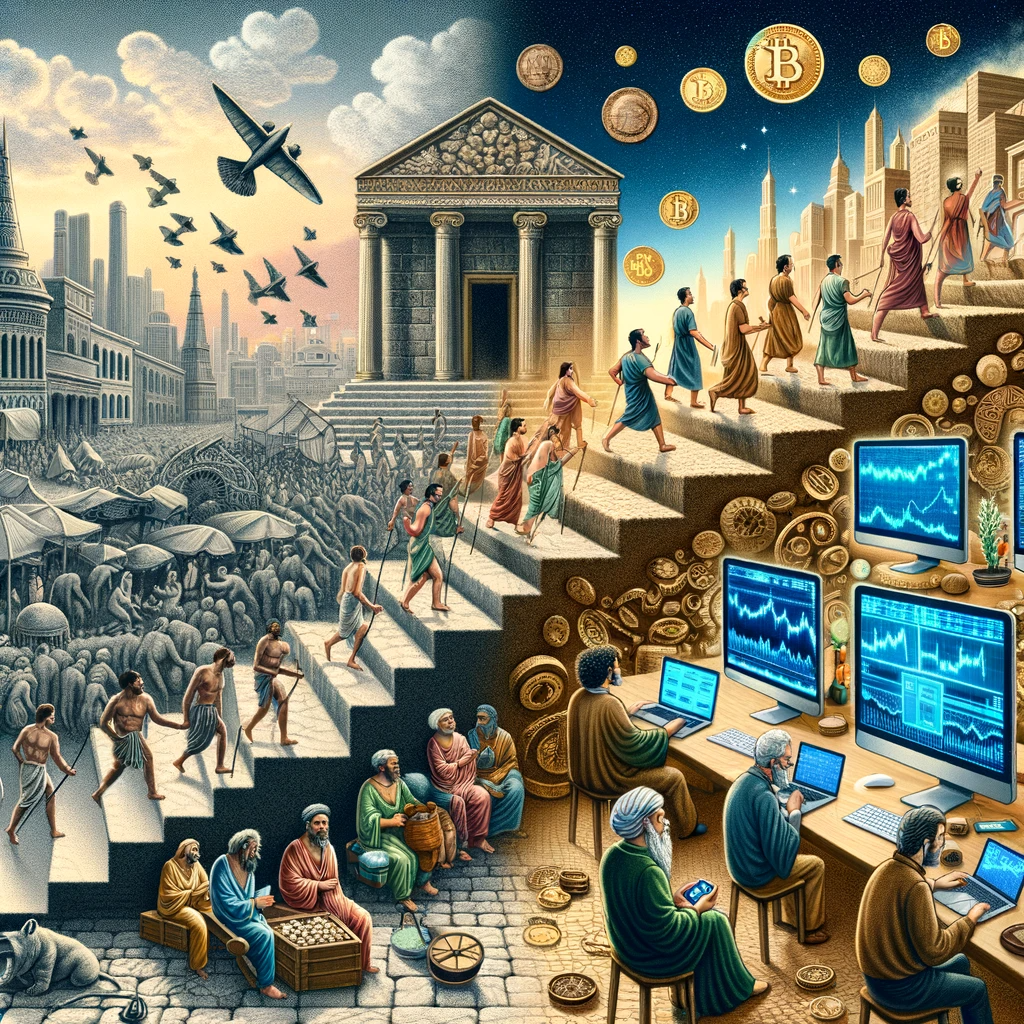
The history of trading is as old as civilization itself, evolving from basic barter systems to the sophisticated algorithmic trading of the modern era. This journey through time reflects the advancement of human ingenuity and technological progress. Let’s explore how trading has transformed over the centuries.
- The Barter System: Trade in Ancient Times: The barter system was the earliest form of trading, where goods and services were exchanged directly without the use of money. This system was prevalent in ancient times, with evidence of bartering dating back to 6000 BC in Mesopotamia. According to the Cambridge World History of Food (Kiple & Ornelas, 2000), the barter system was essential for the exchange of spices, textiles, and other commodities in ancient trade routes.
- The Introduction of Currency: The transition from barter to currency was a major milestone. The first known currency was created by King Alyattes of Lydia, now modern-day Turkey, around 600 BC. The development of coinage made trade easier and more efficient, as highlighted in “The Ascent of Money” by Niall Ferguson (2008).
- Stock Exchanges and the Birth of Modern Trading: The establishment of stock exchanges marked the beginning of modern trading. The Amsterdam Stock Exchange, established in 1602 by the Dutch East India Company, is considered the world’s first stock exchange. This era was characterized by manual trading processes, as documented in “A History of the Global Stock Market” by B. Mark Smith (2003).
- The Digital Revolution and Online Trading: The digital revolution in the late 20th century transformed trading, making it faster and more accessible. The introduction of online trading platforms in the 1990s allowed individuals to trade directly from their computers. The NASDAQ, established in 1971, was the world’s first electronic stock market, as noted in “Electronic Exchanges” by Michael Gorham and Nidhi Singh (2009).
- The Rise of Algorithmic Trading: The 21st century ushered in the era of algorithmic trading, where computer algorithms are used to execute trades at high speed and volume. According to a report by the TABB Group (2018), algorithmic trading accounts for a significant portion of trades in financial markets. The integration of artificial intelligence and machine learning has further advanced this field.
Conclusion
The evolution of trading, from the barter system to algorithmic trading, is a testament to human innovation and adaptation. The progression from physical trading floors to the realm of digital algorithms reflects not just changes in technology, but also in our approach to financial markets.
References
Kiple, K. F., & Ornelas, K. C. (2000). The Cambridge World History of Food. Cambridge University Press.
Ferguson, N. (2008). The Ascent of Money: A Financial History of the World. Penguin Books.
Smith, B. M. (2003). A History of the Global Stock Market: From Ancient Rome to Silicon Valley. University of Chicago Press.
Gorham, M., & Singh, N. (2009). Electronic Exchanges: The Global Transformation from Pits to Bits. Elsevier.
TABB Group. (2018). Algorithmic Trading Trends and Insights.

Leave a Reply